The knee joint is one of the largest and most complex. It is subjected to a huge load every day, so it’s no surprise that it sometimes stops working normally. If your knee hurts, you notice swelling, and the pain is almost constant, be sure to see a doctor. Such a pathological condition may be a sign of the development of one of the diseases that deform the joint. Of course, you need to learn to distinguish between situations where a doctor’s visit is very necessary. But lack of treatment or self-care can lead to complications.
The structure of the knee joint
To better understand why your knees hurt, you need to understand their anatomy. So articulation consists of the femur, tibia, and kneecap. The two largest bones have two protrusions each: the inner and outer condylus.
All surfaces in contact with each other are covered with hyaline cartilage. Thanks to him, the mobility and damping properties of the knee joint are ensured. Around this connection of the bones is a kind of capsule lined with a synovial layer on the inside. It is filled with synovial fluid, which nourishes the mobility of the joint.
The knee joint is not just made up of bones. All its elements are united by sacral and lateral ligaments, thigh muscles and tendons. The kneecap connects to other elements through its own ribbon. 6 joint bags are required to move the knee. The joint shown is fed and innervated through nerves and blood vessels located in the soft tissues surrounding the joint.
Pain in the knee joint: causes
If your knee starts to hurt, swelling occurs, your mobility is limited, and the discomfort is severe enough, see a doctor right away. Once the destructive process has begun, it will be impossible to completely heal your knees. However, its progress can be stopped or slowed down.
So we can distinguish the following causes of knee pain:
- gonarthrosis.It occurs in nearly 50% of joint damage. The pathology develops for a very long time. Among the symptoms of this disease we distinguish the following: at rest the knee does not hurt, but it becomes difficult for a person to climb stairs, walk long, squat and get up from squatting. During movement, the patient hears a crackle in his knee, his mobility decreases. Over time, cartilage wear decreases the distance between bone surfaces. In this case, osteophytes appear, the nerves and blood vessels are compressed, and the knee itself is deformed;
- meniscopathyand the development of meniscus cysts. Most often only one knee hurts. The pathology can be caused by a single injury or intermittent damage to the joint. During exacerbation, the pain is acute, throbbing, sharp, severe. With this disease, deformity of the joint is not threatened, but inflammation can affect the joint bags;
- circulatory problems (necrosis).This interferes with the nutrition of the knee. This condition most commonly occurs in adolescence. They are the ones whose bone growth is too fast, in which their nutrition is a bit difficult. If the pain in the knee joint is strong enough at first, its intensity will decrease after a while. The pain is usually localized at one point and does not spread to the entire knee. Hypothermia can increase discomfort;
- arthritis.It is an inflammatory pathology of the knee that can be diagnosed in young people, especially women. However, the knee is very sore, the affected area is swollen and the skin is red. The pain at night becomes more pronounced. The knee hurts even at rest when the weather changes. The cause of the pathology is overweight, old age, weakness of the immune system;
- bursitis.This is an inflammatory lesion of the joint bags of the knee. Typical symptoms of the pathology are reddening of the skin in the affected area, swelling, decreased range of motion. The cavities of the joint bags are emptied, which contains harmful microorganisms. The cause of the pathology is trauma, excessive physical activity. Not only does the knee hurt a lot, but general weakness and malaise develop;
- arthritisHere, the inflammation affects the synovial membrane of the knee joint. However, swelling and burning pain appear in the articulation area;
- periarthritis.This disease is more commonly diagnosed in women who are overweight and are already 40 years old. At the same time, an uncomfortable feeling occurs on the stairs when the leg is straightened. The pathological process affects the tendons, ligaments and muscles, the joint capsule. The pain hurts, swelling appears on the limb;
- chondromatosis.This disease is characterized by the formation of small lumps of cartilage located in the shell of the articular sac. At the same time, dehydration of the joint is manifested, its mobility is limited, and crackling is heard when moving. As the soft tissues are pinched, the patient feels severe pain;
- chondromalacia patella.Here the cartilage goes through degenerative changes: it simply dies. The causes of this pathological condition are banal: knee injury, characteristics of certain professions. At the same time, the knee hurts a lot, the discomfort becomes more pronounced with each movement. A crackle or crack can be heard very well in the left or right knee. A person is virtually unable to stand on the affected limb;
- bone tumor.Knee pain is caused by an increase in a neoplasm that compresses soft tissues with nerves and blood vessels;
- Baker's cyst.It is a small hernia that can occur in young people and children aged 3 to 7 years. It is so small that it is not always possible to diagnose it during a test. It does not pose a danger to human health and does not cause discomfort. However, as you grow, your joints may ache, especially when you bend and straighten your legs. If the hernia is large, surgery is performed to remove it;
- knee tendinitis.It is an inflammation of the tendons in the area of the knee that cannot perform their functions normally. The disease affects almost everyone. The pain is usually aching and the affected area responds to changes in the weather;
- osteochondritis of the knee.This is where the cartilage comes off the joint surface. At first, the knee does not hurt very much, but over time its intensity increases and the inflammation joins the pathological process;
- Koenig's disease.Here, some of the cartilage separates from the bone and can move inside the joint. However, movement becomes difficult, mild pain occurs. With the progression, swelling of the knee joint can also be observed. Pathology is more difficult to treat in adults than in children;
- Osgood-Schlatter pathology.This ensures the formation of bumps in the knee area. The disease is most commonly diagnosed in boys as well as athletes. The pain is sharp, aggravated by bending and straightening the legs.
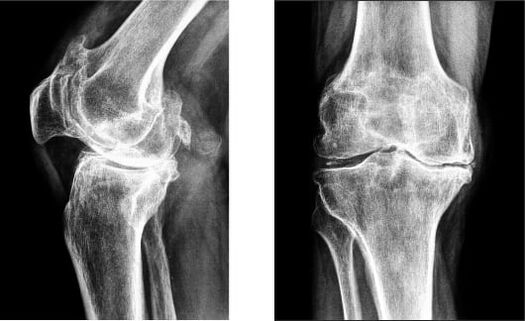
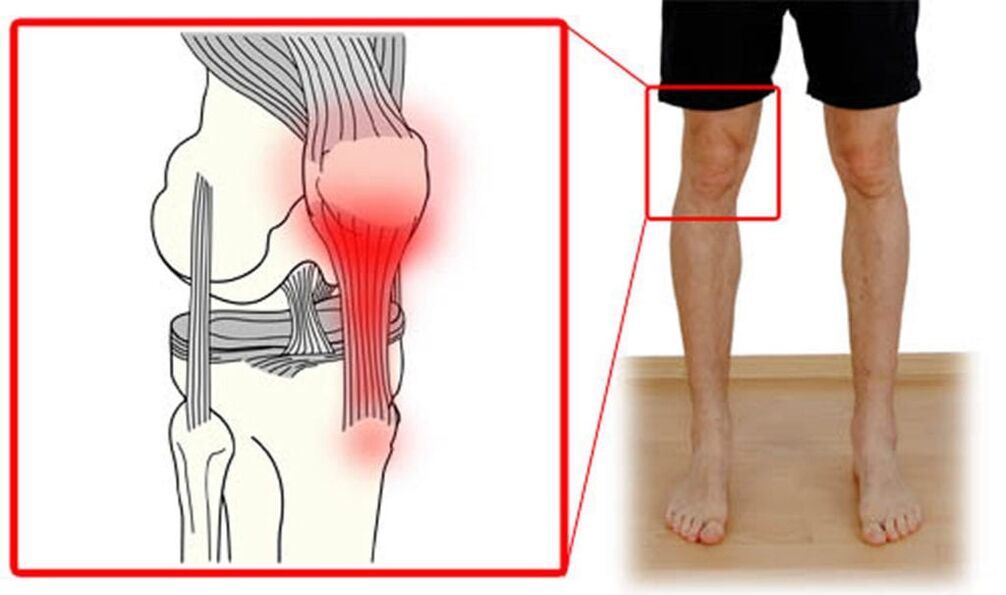
These are the main reasons, but not the only ones. Therefore, other factors that cause pain in the knee should be considered.
Diseases of other organs such as causes of knee pain
Some pathologies that are not related to the knee joint can cause pain:
- Fibromyalgia.The discomfort is localized in the muscles and soft tissues, but can also occur in nearby joints. The inflammatory process does not develop. In addition to the painful pain of the knee joint, the person feels stiffness and fatigue during movement.
- The hip joint is dysplasia or coxarthrosis.The pain syndrome in this case extends to the entire leg.
- Neuropathy of the sciatic nerve.The vertebrae of the lumbosacral spine are pinched. Severe throbbing pain can radiate to the thighs and knees.
What systemic pathologies can cause knee pain? In addition to the causes described above, other factors contribute to the development of pain syndrome:
- gout.The disease presented occurs due to a violation of uric acid metabolism in the body. It can be poorly removed from it, turning into salt deposits that accumulate in the joints. This can also cause the knee to hurt. And the pain is very sharp, sharp. The pathology is more common in men who abuse alcohol and eat improperly. The skin in the affected area is red, and the knee joint hurts more at night. The duration of the attack ranges from a few days to several weeks;
- osteoporosis.The pathology is associated with low bone density due to its malformation. The pain in the knee joint is dull and aching, not so easy to remove. In this pathology, bones are very sensitive to fractures;
- rheumatoid arthritis.It is a systemic pathology characterized by inflammation of the connective tissue. It begins its active development with a decrease in the body's protective functions. It manifests itself in a feeling of stiffness that a person may feel after a long period of rest;
- osteomyelitis.The bacterial pathology shown causes rather severe, dull pains. The skin in the affected joint area is reddened and the discomfort increases with each movement. The danger of this disease is that it results in the onset of bone marrow destruction;
- infectious diseases.They are characterized by pain in the knee joint that resolves after an antibiotic treatment;
- Paget's disease.In this case, the bone tissue is formed incorrectly, so the spine begins to deform. This pathology affects the tubular bones, which later become very fragile. Recognition of the disease is quite difficult as symptoms may not appear. The only thing that can indicate the presence of pathology is that the sore knee hurts at night and heat is felt at the site of the injury.

If the knee pain is caused by a systemic disease or skeletal pathology, it is not always possible to get rid of it completely. However, treatment should be given without error so that the disease does not progress or at least slow down.
Trauma as the cause of pain syndrome
In this case, the pathological processes can develop both immediately after the injury and after a while. Such injuries of the knee joint can be distinguished:
- Torn, torn or torn ribbons in the knee.These injuries lead to the appearance of articulatory "progression" syndrome. In addition, a person feels severe pain and develops hemarthrosis of the joint, which becomes unstable.
- Injury.Here, the intensity of the pain syndrome is low. There are no serious consequences after the injury. The swelling and hematoma usually go away on their own within a week or two.
- Meniscus rupture.It causes a strong blow to the anterior region of the knee joint. After an acute period of pathology, pain syndrome usually worries the patient to climb stairs, which is quite difficult to perform. There is a slight swelling in the knee joint.
- Fracture. Appears at high altitudes when dropped or subjected to strong shocks. The pain is strong, sharp, swelling appears in the affected area, the skin turns pale. The victim cannot stand on his injured leg. When fractured, cracking and cracking are heard, and the bone can break through the skin.
- Tendon rupture.This injury is uncommon, but leads first to acute and then to aching pain. While walking, pain in the left or right knee increases.
- Dislocation of the knee joint.In this case, some components of the joint may be removed.
Trauma can cause chronic illness.
Most pathologies of the knee joint have similar symptoms, making them quite difficult to recognize. That’s why self-healing isn’t worth it, because it can make matters worse.
Who is in danger
Knee pain, cracking, and swelling in the affected area are more common in some people than in others. The risk group includes those who:
- Presence of primary pathologies.
- genetic predisposition.
- Permanent sports overload of the knee.
- Overweight.
- Injury.
- I had surgery on my knee joint.
- Inadequate development of the muscular system of the knee joint.
In addition, women are more susceptible to knee diseases and advanced and older people.
In what cases it is necessary to consult a doctor
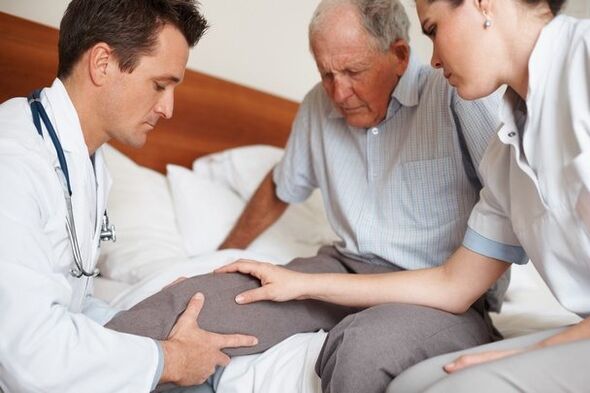
If someone feels a pain in their knee, they should contact a specialist urgently:
- The patient has been in pain for more than two months, which prevents him from sleeping peacefully at night.
- If the pain syndrome is characterized by high intensity, it appears suddenly.
- He cracks in his knee joint while walking.
- The knees hurt daily and at certain times under certain conditions.
- Instability is felt in the knee joint from time to time.
- Other symptoms: skin rash, fever, fever.
- There was painful pain, accompanied by deformity of the joints and restriction of their mobility.
- Pain syndrome becomes a constant companion for a person.
- Signs of an inflammatory process appeared: redness, swelling, increased local temperature in the affected area.
These signs are enough to see a doctor. By delaying the visit, the patient increases the duration and complexity of therapy and allows further development of the pathology.
Types of pain
Most of the causes of this condition are already clear. But the nature of the pain may be different. For example, depending on the disease that caused it, the pain is as follows:
- sharp, sharp.Causes rupture of meniscus or ligaments, reactive arthritis, acute phase of bursitis;
- boring, pulling.It can provoke bursitis or synovitis;
- sore.This type of pain is characteristic of arthrosis, gonarthrosis;
- pulsating.A person feels when their meniscus is damaged or due to a deforming arthrosis lesion;
- burning.It is characteristic of sciatic nerve pinching as well as bone tuberculosis;
- thrust.It is caused by the cyst of the synovial bursa. The stabbing pain is characteristic of osteoporosis, an old injury to the meniscus;
- drilling.It is caused by osteomyelitis;
- periodic.Appears when the patient notices inflammation of the tendons or muscles;
- crossed.It causes pinching of nerve endings.
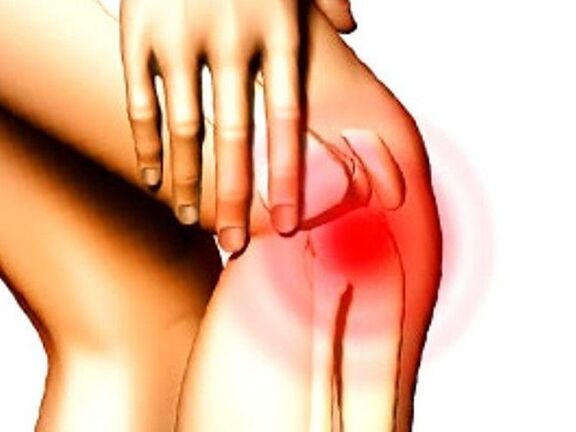
Diagnosis of pathology and first aid
Many people complain that their knees hurt and they don’t know what to do. But if you feel pain and cracking in your knee joint, you should definitely do the test and start treatment.

Diagnostics involves the use of the following procedures:
- Laboratory testing of blood and urine.
- Blood chemistry.
- Puncture of bone marrow and joint fluid.
- Smears for the presence of bacterial microflora.
- Arthroscopy. This procedure is used both as a diagnosis and to treat joint pain. It is easy to perform and does not require a long rehabilitation period.
- Radiography.
- MRI or CT.
- ultrasound.
- Densitometry.
Knee pain: First aid
If someone feels aching or pulling pain in the leg area of the knee, they should first take care of the rest of the limb. Home treatment involves taking painkillers or anti-inflammatory drugs.
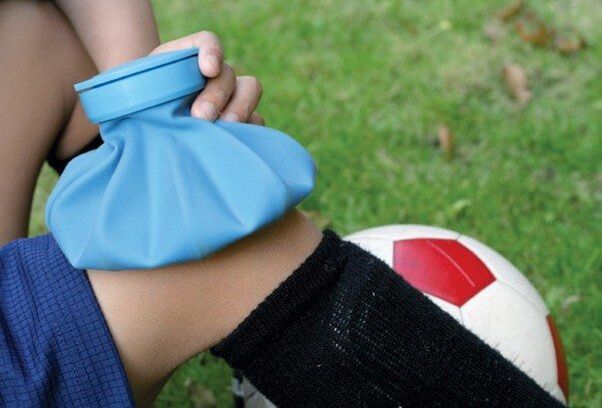
The pain can be relieved with a cold compress. Cold is used as an analgesic method when the cause of the pain is trauma. The limb is immobilized and placed on a hill. If there are sores in the joint area, they should be treated with an antiseptic. These measures are not a complete treatment. It should only be taken before a doctor's visit.
Knee pain: Medical treatment
So what to do if you hear a crack in your joint and feel severe discomfort? First, you need to find out why these symptoms appear. One of the stages of therapy is medication. So with the pain of the knee joint, you can quickly remove the severe symptoms with the help of such drugs:
- antibiotics (if the discomfort is caused by a viral infection);
- non-steroidal anti-inflammatory drugs.
Some pathologies need to be treated with surgery. If there is fluid in the knee cavity, it should be removed. The cyst can also be treated with surgery or glucocorticosteroid blockade.

If the joints hurt due to injury, it may be necessary to relocate the bones in some cases. Tight bandages, orthoses and even plaster are applied to the affected joint. The limb should not only be treated with tablets. Often, the patient is instructed to wear or use special orthopedic devices to remove the load from the knee.
Systemic pathologies must be treated in a complex manner. In such cases, knee pain should be treated with immunosuppressants, anti-inflammatory drugs, glucocorticosteroids. Drugs are injected into the joint to eliminate the symptoms of gonarthrosis, and chondroprotectors are used.
Physiotherapy and massage
If the knee joint hurts when standing up, a crack is heard, and discomfort is disturbed even at night, physical exercises as well as massages will help get rid of stiffness and relieve the pain.
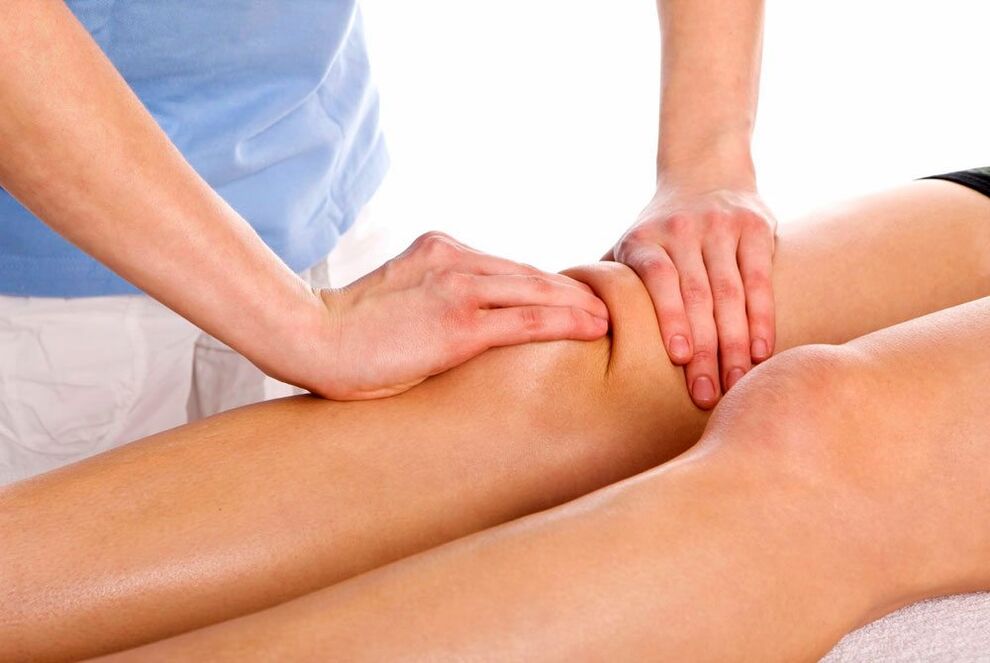
However, gymnastics should be performed if the person is not very painful and with the permission of a doctor. All exercises are performed slowly. You cannot make sudden movements. If your knee hurts a lot, you need to switch to the simplest exercises. The weekly load can be increased.
In a supine or sitting position, you can bend and stretch your limbs, alternating half-turns, pulling your knees to your stomach, moving your legs to the side. After completing the exercises, you should relax and then move on to the massage. This procedure is also very effective in relieving pain.
A sore knee can be kneaded or rubbed on its own, but it would be better if a professional did it. In order to get rid of most of the symptoms, you need to have a massage treatment with a session of up to 20 minutes. They rub and press the inner and outer as well as the side surfaces on the patella. During the procedure, you need to make sure that the person does not hurt.
How to treat knee joints at home?
Knee cracking as well as pain at night is an unpleasant phenomenon. Why these symptoms appear is already known. However, medications are not the only way to relieve pain and restore normal joint function. You can also do this at home with the help of folk remedies.
Getting rid of the pathology quickly will not work. This way, you need to treat your knee for at least two months. In addition, you need to find really effective products that have good reviews.
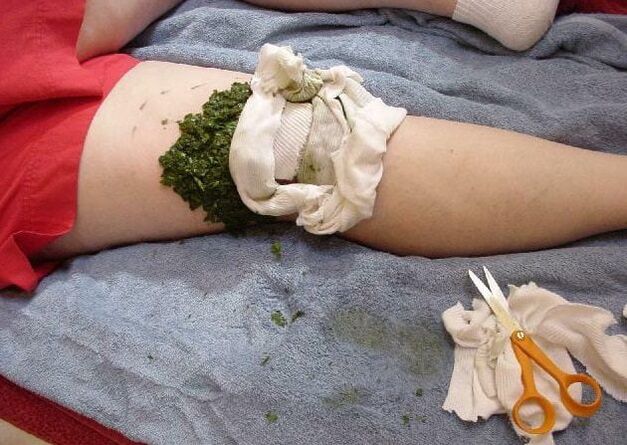
The following recipes may be helpful:
- Pour 2 large spoons of seaweed into half a liter of boiling water and let it simmer. The medicine should be taken to 100 ml twice a day. You can apply a cinquefoil decoction to your sore knee as a compress at night.
- Oatmeal helps to get rid of pain. To prepare it, take a liter of water and a glass of grain. Bring the mixture to a boil and allow to stand overnight. Use 2 glasses of fluid during the day, divided into several portions. It takes 2 weeks to treat the joints in this way.
- You can apply an equal proportion of grated potatoes and horseradish to relieve the discomfort and improve blood circulation in the affected area. It helps to get rid of pain quickly. Apply a compress to the affected knee and cover with a clean cloth. Wash off after 15 minutes. Only 10 procedures are enough to relieve unpleasant symptoms.
- A mustard compress, which is put on the sore leg at night, also received a good rating. To make it, take a tablespoon of mustard mixed with the same amount of honey and soda. In the morning, a compress helps relieve severe discomfort.
- If the knee joints are sore, bitter pepper tincture can be used for rubbing. Fill a half-liter bottle with chopped pepper and then pour alcohol on top of the container. You have to stick to the remedy for a week.
You can also have a knee self-massage at home.
Once you know why you are feeling uncomfortable, you can choose the right folk therapies to help remove them. But you need to see a doctor first.
Prevention of pathology
In order for your knee joints to stay healthy and work well for a long time, you need to follow the simple recommendations of doctors:
- Reduce joint stress.
- It makes sense to combine rest and work.
- Treat infectious diseases in the body in a timely manner.
- Avoid limb hypothermia.
- After 35 years, it is advisable to start taking chondroprotectors.
- During sports, the joints must be protected with knee pads - special orthopedic devices to secure the joint.
- Normalization of body weight is important.
- Nutrition plays an important role in bone health. It is better to reduce the consumption of animal saturated fats, white bread and sweets. More fiber, vegetable oil, vegetables and fruits should be included in the diet. Proper nutrition not only relieves discomfort but also improves joint function.













































